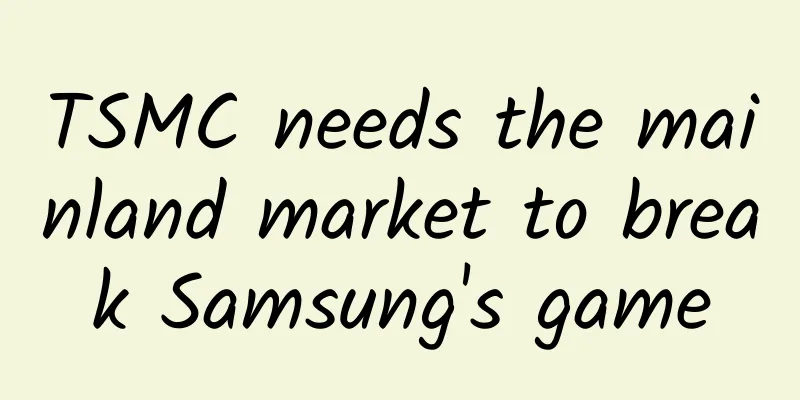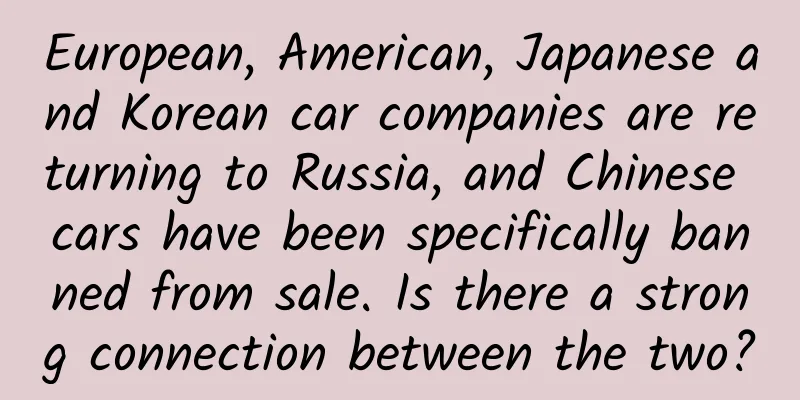|
Since TSMC lost to Samsung in the 14/16nm FinFET process competition, Qualcomm, which has always been a major customer of TSMC, has handed over the next-generation chip Snapdragon 820 to Samsung. It is also reported that MediaTek also intends to hand over the production of the next-generation chip to Samsung. Faced with such a situation, how should TSMC respond?
TSMC is strong
Among the top five semiconductor foundries in the world in 2014, TSMC had the fastest revenue growth of 25.2%, with revenue reaching US$25.18 billion and a market share of 53.7%. No matter from which aspect, TSMC is the strongest.
According to Gartner data, UMC is the second fastest growing semiconductor foundry among the top five, with a growth rate of 10.8%, revenue of US$4.62 billion and a market share of 9.9%. It has regained the title of the second largest semiconductor foundry since it was snatched away by Global Fonudries in 2012.
Global Foundries' revenue fell 3.3% year-on-year to US$4.4 billion, accounting for 9.4% of the market share, ranking third, and suffered a huge loss of US$1.5 billion. However, Alian Petroleum Capital was unwilling to admit defeat and acquired IBM's global semiconductor business again this year, and purchased 14nm FinFET technology from Samsung to quickly leap to 14nm FinFET.
After Samsung lost Apple's processor order in 2014, its semiconductor foundry business revenue increased by 4.9% year-on-year to US$2.41 billion, accounting for 5.1%. However, Samsung Electronics is still the world's largest mobile phone company. Its Exynos7420 processor is currently the world's highest-performance mobile phone processor. It has also launched LTE baseband and abandoned Qualcomm's baseband on its own S6 mobile phone. In addition, Samsung also has strong competitiveness in DRAM, CMOS and other industries, which is enough to ensure the continued development of its semiconductor manufacturing.
TSMC's concerns
TSMC's customers are declining or leaving. It won the order for Apple's A8 processor last year, but this year the mass production of the 16nm FinFET process has been postponed, and Apple is going to launch a new generation of iPhones in September. It is obvious that at least at this stage, the Apple A9 processor should be produced by Samsung. Other major customers include Qualcomm, Broadcom, NVIDIA, AMD, Marvell, etc.
Qualcomm is currently putting pressure on Samsung, MediaTek and Huawei HiSilicon. Its net profit fell 47% in the first quarter of this year, and it is under pressure from investors to split up. In addition, as mentioned at the beginning, due to the overheating of Snapdragon 810 and the slow progress of TSMC's 16nmFF+, Qualcomm has handed over the production of the next-generation chip 820 to Samsung. In addition, Qualcomm does not want to put all its production capacity in one basket, and is cooperating with UMC to develop 18nm process, which has a serious negative impact on TSMC because Qualcomm has been TSMC's largest customer for several years.
Broadcom, NVIDIA, AMD, Marvell and other customers are declining. Broadcom has been acquired by Avago. Samsung is also a customer of Avago. It may not be difficult to win some orders from Broadcom. NVIDIA is in a difficult situation and is reported to be acquired by MediaTek. AMD has transferred some GPU orders back to Global Foundries. In fact, all of the above customers were hurt by TSMC's competition for Apple's A8 processor. At that time, TSMC gave most of its 20nm process capacity to Apple A8, and these big customers including Qualcomm were not taken care of.
TSMC faced competition from UMC and Global Foundries' 20/28nm processes. In February this year, it insisted on not lowering prices to accommodate MediaTek and Qualcomm, but in July it began to offer discounts to win over these two major customers. However, as mentioned above, TSMC's priority for Apple in the 20nm process made them feel threatened, and they still gave some orders to UMC. In addition to Qualcomm already using Samsung's 14nm FinFET, it is rumored that MediaTek is also interested in using Samsung's 14nm FinFET process.
Faced with the unfavorable progress of 16nm FinFET, TSMC began to increase its efforts to promote the progress of 10nm process this year. When facing the media, TSMC's co-CEO CC Wei said that 10nm will be put into production in the fourth quarter of 2016. However, Samsung did not give TSMC a chance to catch its breath. Recently, it released a video saying that it has added 10nm FinFET to the roadmap and has finished products for customers to refer to. In this way, Samsung is certainly ahead of TSMC in 10nm process.
The competitive pressure brought by Samsung has caused TSMC to lower its semiconductor foundry growth forecast for this year from 10% to 6%. TSMC's capital expenditure has dropped from the original US$11.5-12 billion to US$10.5-11 billion, a capital reduction of US$1 billion, while Samsung Semiconductor's capital expenditure has increased by about 4% to US$15 billion.
How TSMC breaks through
TSMC is currently the world's largest foundry with strong manufacturing technology capabilities. Even though it is temporarily lagging behind Samsung in 16nm and 10nm processes, it is still one of the world's three most advanced semiconductor manufacturing plants, including Intel and Samsung. This leaves time for TSMC to adjust its posture and catch up with Samsung.
In another Taiwan story, mainland China has become the world's largest manufacturing country. It is striving to transform into China's creation and develop high-end manufacturing. However, mainland China lags far behind TSMC in semiconductor manufacturing and needs advanced semiconductor manufacturing technology. However, advanced semiconductor manufacturing technology is different from other aspects and requires continuous research and development, which takes time. Since Samsung began producing processors in 2007, it has strengthened the research and development of semiconductor manufacturing technology and continued to invest huge amounts of money. However, technological breakthroughs rely on Liang Mengsong, an important technical talent poached from TSMC. It can be seen that it is difficult for the mainland to develop semiconductor manufacturing and catch up. In addition, SMIC, the largest semiconductor manufacturer in the mainland, also stated that its 14nm is expected to be mass-produced by 2020, which brings opportunities for TSMC.
China purchased more than half of the world's chips in 2014. The mainland's largest semiconductor manufacturer, SMIC, has seen its share of revenue from the mainland market continue to increase in recent years, rising to more than 45% in the fourth quarter of last year. UMC has long been eyeing this market. In addition to acquiring Hejian Technology, which was built as early as 2003, it is currently building a more technologically advanced semiconductor factory in Xiamen. This shows how much importance each semiconductor foundry places on the mainland market. If TSMC wants to gain time for adjustment, it needs to start with the mainland market.
In order to change its dependence on foreign semiconductor industry, the mainland set up a chip industry fund of 20 billion US dollars last year to support the development of domestic chip design industry. In addition, HiSilicon, Spreadtrum, Rockchip and other mainland companies are rising. The number of Chinese companies in the world's top 50 fabless IC suppliers increased from 1 in 2009 to 9 in 2014, which shows the rapid development of mainland chip companies. In addition, the mainland is actively entering the DRAM industry. In 2014, the mainland consumed 19.2% of the world's DRAM (data from DRAMeXchange) with an amount of 10 billion US dollars. All of this requires advanced semiconductor manufacturing technology. However, Samsung is a full-industry chain enterprise from chip design to mobile phone production and sales, which forms competition with the mainland, while TSMC is just a simple foundry and has a good complementary relationship with the mainland.
The DRAM industry that China intends to intervene in is the lifeblood of Samsung Semiconductor. Before 2008, South Korea and Taiwan had similar DRAM production, but after the 2008 economic crisis, Samsung made a plan to defeat Taiwan, and the DRAM industry was one of the main industries that Samsung used to defeat Taiwan. In 2014, South Korea accounted for more than 70% of the global DRAM market share, and Samsung is the most important DRAM manufacturer in South Korea, accounting for more than 40% of the global market share. TSMC began to try to get rid of South Korea's DRAM technology in 2013 and developed Wide I/O 2 and HBM products with Taiwan's DRAM manufacturers. China also needs DRAM technology to enter the DRAM industry. However, no matter from which aspect, China's DRAM technology lags behind Taiwan. If TSMC and related Taiwanese DRAM manufacturers cooperate with China, it will undoubtedly help both sides win and hit Samsung's current absolute advantage in the DRAM market.
Faced with Samsung's aggressive stance in the semiconductor foundry market, TSMC should consider deeper cooperation with the mainland to strike at Samsung's DRAM industry and seize the mainland's developing chip foundry business.
As a winner of Toutiao's Qingyun Plan and Baijiahao's Bai+ Plan, the 2019 Baidu Digital Author of the Year, the Baijiahao's Most Popular Author in the Technology Field, the 2019 Sogou Technology and Culture Author, and the 2021 Baijiahao Quarterly Influential Creator, he has won many awards, including the 2013 Sohu Best Industry Media Person, the 2015 China New Media Entrepreneurship Competition Beijing Third Place, the 2015 Guangmang Experience Award, the 2015 China New Media Entrepreneurship Competition Finals Third Place, and the 2018 Baidu Dynamic Annual Powerful Celebrity. |










